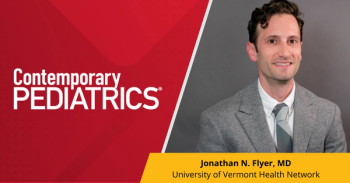
Investigators explore prescription stimulant misuse among adolescent ADHD patients
Participants who only initiated non-stimulant therapy for ADHD had significantly greater odds of past-year prescription stimulant misuse than the population controls.
There may be multiple factors that lead to prescription stimulant misuse among pediatric patients with attention deficit/hyperactivity disorder (ADHD), including psychosocial factors and non-stimulant therapy treatment.
A team, led by Kennedy Werner, BS, Wayne State University School of Medicine, assessed whether non-stimulant therapy for ADHD is linked to prescription stimulant misuse for adolescent patients in data presented during the 2023 American Psychiatric Association (APA) annual meeting in San Francisco.
A Need for Research
There remains a large need for more research focusing on the associations between non-stimulant therapies for patients with ADHD and prescription stimulant misuse.
“Prior work has shown that youth who are treated early with stimulant medication for ADHD for longer duration tend to have the lowest risk of substance use and misuse during adolescence relative to other stimulant treated subgroups,” the authors wrote.
In the study, the investigators examined data from 16 annual surveys between 2005-2020 of nationally representative samples of US 10th and 12th grade students (n = 150,395). The participants were surveyed through self-administered questionnaires.
The investigators used design-based logistic regression analyses that tested the associations between age of onset and duration of stimulant medication therapy medication therapy for ADHD and stimulant misuse. They also controlled for potential confounders and used population controls and adolescent patients who initiated stimulant therapy for ADHD at ages 9 years and younger for durations of at least 6 years as reference groups to compare to patients who only received non-stimulants.
ADHD Therapies
The results show approximately 11.5% of adolescents were treated with stimulant or non-stimulant therapies for ADHD during their lifetime. This includes 3.3% of patients who only received non-stimulant therapies.
In addition, 10.4% of all patients reported past-year prescription stimulant misuse.
Participants who only initiated non-stimulant therapy for ADHD had significantly greater odds of past-year prescription stimulant misuse than the population controls (adjusted odds ratio (aOR), 1.90; 95% confidence interval [CI], 1.67-2.17).
The investigators did not find differences in the odds of prescription stimulant misuse among patients with ADHD treated with non-stimulant therapy and patients who initiated stimulant therapy at ≤ 9 years old for longer duration (≥ 6 years) (AOR, 1.21; 95% CI, 0.91-1.62).
“The non-stimulant therapy for ADHD group permitted youth with stimulant therapy for ADHD to be compared to a medication treated ADHD group without a history of prescription stimulants as well as population controls,” the authors wrote. “While an association between non-stimulant therapy and prescription stimulant misuse was found, it is possible that prescription stimulant misuse occurred before non-stimulant therapy was initiated as we could not determine true causality.”
The investigators also listed some psychosocial effects and comorbidities such as being bullied and conduct disorder as potential contributing factors for prescription stimulant misuse.
The Future
They also said there is a need in the future to focus on these factors, as well as ADHD severity, phenotype, non-stimulant therapy onset and duration, and specific non-stimulant medication.
In the meantime, the team had advice for clinicians.
“Clinicians are encouraged to monitor youth prescribed non-stimulant therapy for ADHD for potential prescription stimulant misuse during adolescence,” the authors wrote.
Reference:
1. Werner K, Wilens T, Esteban McCabe S, McCabe V, Schulenberg J et al. ×Non-Stimulant Therapy for ADHD Is Associated With Prescription Stimulant Misuse During Adolescence. Abstract presented at American Psychiatric Association 2023 Annual Meeting. San Francisco, CA. May 20-24, 2023.
Newsletter
Access practical, evidence-based guidance to support better care for our youngest patients. Join our email list for the latest clinical updates.









